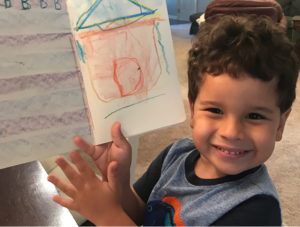
As the coronavirus pandemic began disrupting education around the world, first-year elementary school teacher Emily Brigham faced something she hadn’t expected: an opportunity.
Approached by a few families who were searching for safe, reliable educational options for their children, Brigham made the decision to leave her job at Seaside Charter School in Jacksonville and join the homeschool movement that had served her when she was a student herself.

“I just wanted to help kids however I could, seeing what a vulnerable place they’re in,” Brigham, 24, reasoned last summer. “I want to be a friend to them; I want to help guide them. I want to help them learn to love learning and to love discovery.”
Her decision came at a pivotal moment, when homeschooling numbers, which for years had remained steady at about 3% of the nation’s schoolchildren, began soaring as parents who were concerned about their children’s health – and too much screen time – turned to home education.
A recent Census survey shows the percentage of homeschool households nationwide more than doubled between spring and fall 2020, growing from 5.4% to 11.1%. State-by-state results ranked Florida third in the nation with more than 18% of homeschooling households, only behind Alaska and Oklahoma, with nearly 28% and 20%, respectively.
Even as the pandemic challenged families, it provided opportunities for educators like Brigham to re-invent how they earn their living. She envisioned her foray into entrepreneurship as part grand experiment, part great adventure – with a tinge of uncertainty.
How would she adjust from being in the same classroom with the same students all day to working with a variety of students on different platforms? Inspiration came from an unexpected source: her music background.
A music teacher since she was 14, Brigham and her sister grew up performing bluegrass and folk music with family members at coffee houses and farmers’ markets. That background gave her a window into the “gig economy” that’s taken hold in so many industries over the past year, including the education world.
It may account for why she adjusted so well to her new arrangement, which includes one-on-one tutoring for about five local families, sometimes in person and sometimes over the phone or on the Zoom platform. She consults with parents on curriculum and lesson plans and grades student assignments.
She’s been getting rave reviews from the families she serves, including Ashley Frieling, who is brand-new to homeschooling.

“Emily has graciously been there to answer all of my questions about curriculum, child development and so much more, said Frieling, whose 5-year-old son, Dean, learned how to read with help from his mom and Brigham. “It also feels like cheating to have someone who knows my children’s strengths and weaknesses and is a certified teacher to look over my curriculum and help me fill in the gaps.”
Brigham, who also works for an online Christian school in Pennsylvania teaching writing, rhetoric and grammar to students in fourth through eighth grades, said her biggest surprise over the past year has been the long hours she’s logged.
“I worked from 9 a.m. to 9 p.m. and Saturdays as well,” she said. “I was used to a lot of work, being a classroom teacher in the public schools, but going from elementary to middle school, the kind of grading was not what I was used to.”
Another surprise – a pleasant one – was that she’s been able to match the salary she earned as a traditional classroom teacher.
But the best part of last year, she says, was interacting with students. She discovered that younger children and older ones, though different in their levels of sophistication, have a lot in common. Her first graders told her of loose teeth and skinned knees, while her middle schoolers talked about hobbies, homework and how little sleep they got due to homework.
“They’re both very talkative,” she said.
She has no regrets as she wraps up the school year, prepares for the summer term, and looks forward to the start of the 2021-22 school year. Now that she knows what to expect, she plans to cut back on the music lessons to regain more work-life balance.
“I am very happy with what I am doing,” she said. “The experience has been really satisfying in that I feel like I am using what I learned in my education classes (at the university of North Florida) and at Seaside. It’s like taking school choice to a whole new level.”
She offers this advice for other entrepreneurial-minded educators:
“If this is something somebody wanted to pursue, there has to be a willingness to do a lot of different things. No one can support themselves fully on tutoring alone at first, but as more people hear about it that can become the greater part of your income.”
Brigham counts herself fortunate to be living with her parents, who cover her health insurance. Jobs in the gig economy, which don’t come with pension plans, aren’t for everyone.
But for now, she is embracing the opportunity and enjoying it for as long as it lasts.
“This feels like a bridge, she said. “I’ll see where it takes me.”


